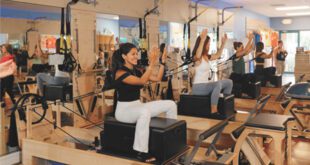 The pain pandemic continues to affect joints worldwide, with over 500 million people impacted by osteoarthritis (OA). Joint pain fundamentally alters how people feel and function in daily life, but fortunately, numerous non-medication support options exist.
The pain pandemic continues to affect joints worldwide, with over 500 million people impacted by osteoarthritis (OA). Joint pain fundamentally alters how people feel and function in daily life, but fortunately, numerous non-medication support options exist.
When experiencing pain, exercise might seem counterintuitive. However, as Professor Helen French emphasizes, “exercise plays the most important role as the first line of treatment for OA.” The widely-shared mantra “motion is lotion” deserves universal adoption, especially among those with joint pain. Research demonstrates that exercise matches the effectiveness of over-the-counter pain relievers while providing superior long-term benefits.
The relationship between posture and OA creates a significant feedback loop. According to occupational therapist Carole Dodge, “Joint misalignment due to arthritis frequently coincides with muscle imbalance creating additional stress on involved joints.” Fortunately, proper movement training programs can quickly improve these muscular imbalances.
Physical therapist Dr. Kelly Ruther offers a paradigm shift: “Your arthritis isn’t what is causing your pain. Your body’s misalignment, and muscular imbalance resulting in joint compression is. Just because you have arthritis doesn’t mean you have to live with discomfort. If we can reduce compression in your joint by improving your body’s alignment and muscular balance we can reduce inflammation, and ultimately reduce pain!”
Pilates for OA
Pilates transcends being merely a method for joint pain management—it represents a lifestyle capable of reducing chronic pain and inflammation. Beginning with alignment, breathing, and core stability, these three foundational elements weave a supportive framework for joints.
Easy as A, B, C
Alignment: The Pilates method primarily focuses on harmonizing muscles through postural stretches and resistance training. Every exercise begins, continues, and concludes with corrective alignment to balance muscle groups. As muscles achieve balance, joint compression naturally decreases, allowing joints to move more freely.
Breathing: Beyond facilitating better posture and stability, breathwork can decrease inflammation. Research indicates that breathwork combined with deeper mind-body training significantly lowers inflammation levels. The guided breathing in Pilates connects body awareness to every movement.
Core: Pilates demonstrates how stability originates from a resilient core. The method extends beyond improving core strength to train dynamic and functional movements. This directly reduces load on the spine and hips. Effective Pilates sessions incorporate functional core challenges including rotation and lateral training.
Support that Brings Joy to Joints
Pilates goes beyond nurturing joints by using equipment that supports optimal movement patterns. This reintroduces playfulness into movement, allowing people to move like carefree children again.
Reformer: A masterfully crafted lower body warm-up called footwork focuses on ankle, knee, and hip alignment while using resistance in a reclined position. This gently facilitates movement even in severely affected knees.
Chair: The Pilates chair ideally removes load while exploring rotation and side bending. The resistance springs provide feedback that integrates the shoulder girdle with the ribcage and spine. These movements accommodate even non-loading joints like hands.
BOSU: This unstable equipment provides balance training challenges. Movements like ‘cat’ and ‘bird dog’ are particularly effective on the BOSU because it provides reactive control, subconsciously engaging the core while stretching the spine and gently challenging balance.
Joints Deserve Happiness Too
Pilates is thoughtfully designed to protect joints from aches and inflammation. While exercise represents the first line of defense against osteoarthritis, Pilates serves as the game-changer that joints deserve. The method provides what joints need to remain happy and healthy through thoughtful, enjoyable movement.
This harmonious relationship even outperforms the most successful dating algorithms, creating a perfect match between body mechanics and therapeutic movement. For those with joint pain, the Pilates method offers not just relief but restoration—rebuilding strength, flexibility and confidence in movement.
By focusing on alignment, breathing techniques, and core stability, Pilates creates the ideal environment for joints to thrive despite degenerative conditions. The supportive equipment and carefully structured progressions allow even those with significant pain to find comfortable ways to move again.
The beauty of Pilates lies in its comprehensive approach that addresses not just symptoms but underlying causes of joint pain. By retraining movement patterns, balancing muscle groups, and improving postural awareness, it tackles the root issues that contribute to joint compression and inflammation.
For the millions suffering from osteoarthritis worldwide, Pilates offers a sustainable, enjoyable path toward better mobility and decreased pain. As more healthcare professionals recognize its benefits, Pilates continues to establish itself as an essential component in joint health management. Begin your transformation today at Club Pilates Ocala, where expert instructors guide you through personalized sessions in a supportive community environment. Your journey to holistic wellness awaits—join us and discover the power of mindful movement.
(352) 421-5199
303 SE 17th Street, Suite 106
Ocala, FL 34471
 Central Florida Health and Wellness Magazine Health and Wellness Articles of the Villages
Central Florida Health and Wellness Magazine Health and Wellness Articles of the Villages



